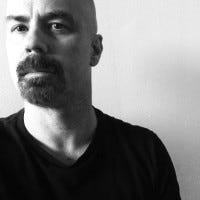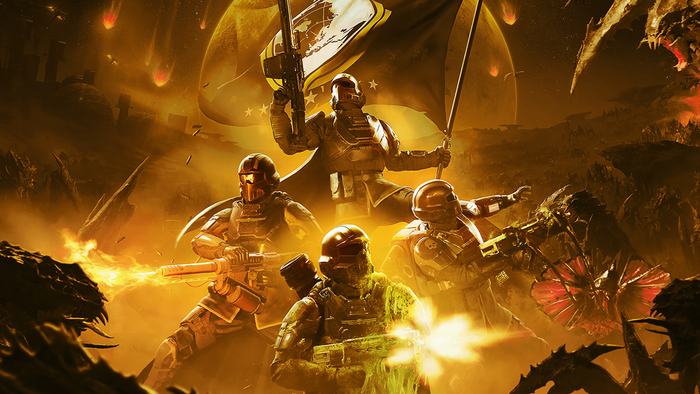
Featured Blog | This community-written post highlights the best of what the game industry has to offer. Read more like it on the Game Developer Blogs.
Weapon Sound Design for Sci-Fi Shooters
Exciting technical and creative challenges abound in the realm of weapon sound design for sci-fi shooters. This post gives insight into that process.

Some of the more interesting and challenging sounds to create for a video game are found in weapon audio for Sci-Fi-based shooters. In the sound design process for this genre, there are many intriguing facets to consider.
Most importantly, the audio needs to feel gratifying for the player when shooting the weapon. What’s more, it needs to feel that way over and over again since player may use their weapons hundreds or even thousands of times over the course of their experience within a particular game title.
Sound design for games can be as much about the technical as it is about the creative. In this article, we’ll look at each aspect, and how they are intertwined throughout the process.
Generally, we work within a two-phase process--pre-production and production, as described below.
Pre-Production: Discovery and Planning Stage
This is the phase where we ask a lot of questions. It’s a discovery and planning stage. It’s where we first conceive the technical design so we are able to move forward on content design. Generally, this is done for all audio and music across a game’s experience (not just weapons).
Audio is driven by the game design itself. And also by the limitations of the technical pipeline (and how we can cleverly get around those limitations). In the case of weapons, how a sound is created is also heavily influenced by the animations to which the sounds will be attached.
From a creative standpoint, we are gathering reference. This is for inspiration and also to generate ideas of approach beyond what our own brains may drum up. We are looking at other games on the market (along with film). What supercool weapon designs are we hearing? Doing this helps us to establish a bar and then we figure out what we can be inspired by and aim to exceed.
What’s the creative approach to the weapons that would best serve the game? For example, is it something with more of a “laser” vibe like Star Wars? Or would it be better to do something that models modern-day weapons while adding “futuristic” enhancements? The beauty of creating for sci-fi weapons is that it leaves a lot of room to be creative.
From a technical perspective, many details need to be defined in this phase.
--What type of weapon is it? Maybe it’s a plasma rifle or some kind of gravity grenade. What are the parameters of the weapon? Does it have a high ROF (rate of fire) or is it slow but powerful like a sniper rifle. What’s the scale of the weapon? Is it a turret or a handheld weapon?
--What are the “event types”? In games, because we are not dealing with a linear mix and instead, we’re thinking about what the player-driven possibilities are, we tend to break it down into “events.” A weapon’s events could be: “fire”. “reload”, “fire empty”, “secondary fire”, “overheat”, “low ammo” and so on. Approaching it this way allows for all aspects of a weapon’s audio to be covered.
--What is the distance model? It’s the behavior of the weapon’s sound over a distance (also known as “falloff”). For more complex weapon designs, the sound designer will need to come up with near-distance sample sets that flow seamlessly into far-distance sample sets.
Though there are many other questions to be asked, those above represent a good starting point.
Production: Making it Happen
Once the weapon’s tech and creative approach have been conceived, creation of the content itself begins. The best place to start here is with mockups of the weapon which are usually done to gameplay video captures or animation exports. A mockup helps in conceiving how all the layers and events of a sound will work together. It also aids in selling the idea of what the weapon will sound like to the rest of the team.
A good game sound designer will keep the idea in the back of his/her mind as to how these assets might be stemmed out as game-ready assets.
Variations on certain sound events are essential. Shell casings dropping to the ground is one such event where this is important. Employing variations adds life.
This is the point where implementation of these assets can begin (after the material is stemmed out). We then would import the material into the game-side audio tool (such as Wwise or FMOD). This process will typically involve collaborating with other departments such as code engineers or animators to align the sound events with the actual game events that these sounds are matched to. Once this happens, we can finally hear the weapon working in the game. This is rarely the end of the work and involves further iteration on the both the content and the tech to refine the weapon’s SFX.
And in the big picture, this sound would also be dialed into the overall soundscape in regard to mix.
As you can see, the process of creating sci-fi weapon sounds involves much more than crafting a couple of sound files. It’s a unique, challenging experience that requires us to find solutions to tech and creative challenges that manifest throughout the process of creation. That’s the most exciting part, though! And when we finally hear the game audio in action, and see from a player’s perspective how much depth the sound design adds to the overall gameplay experience, we know we’ve hit the mark spot-on.
Read more about:
Featured BlogsAbout the Author(s)
You May Also Like













